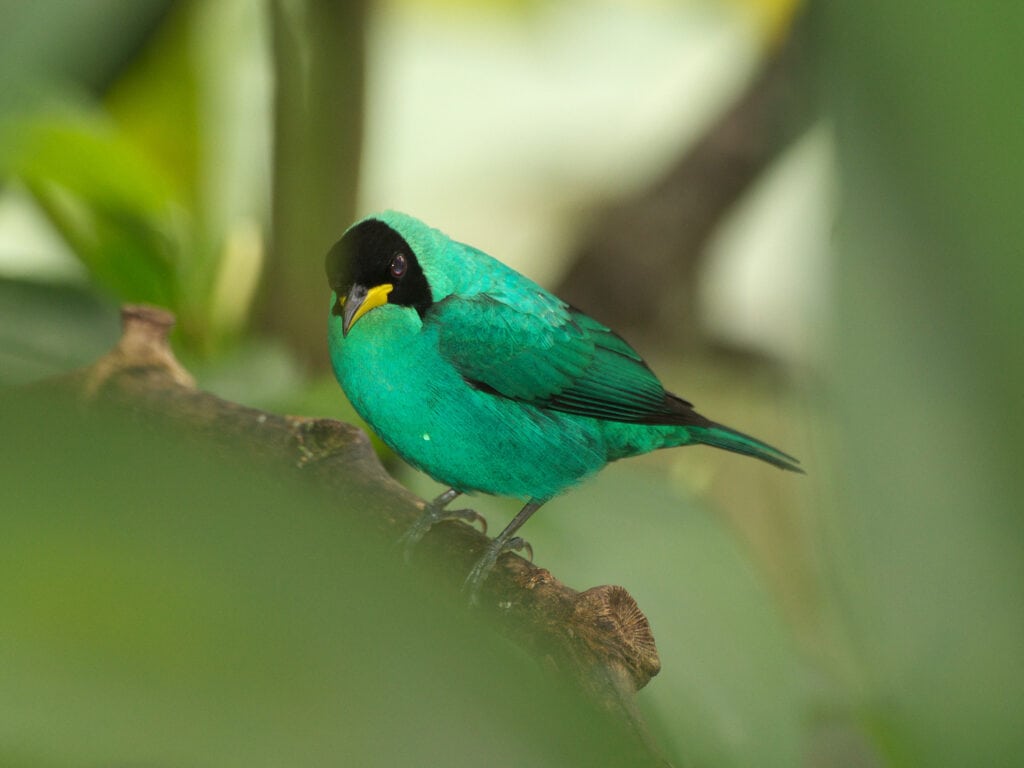The Green Honeycreeper is a small brightly-colored member of the tanager family that makes its home in humid tropical regions of Central and South America. Brilliant electric blue plumage makes the male of this species a standout against the deep greens of the tropical forests that it calls home. The female, on the other hand, is similarly bright in color, but her leaf-green feathers look far more at home against the foliage of her habitat. Though distinct, both the male and female of this species are stunning examples of the brilliant birds that inhabit these rainforest regions.
Related Article: Study Indicates That Better Singers May Be Better Thinkers Too
Recently, a Green Honeycreeper found in Colombia has grabbed the attention of the bird-watching world and the world at large with its unique plumage. The bird was spotted on a farm near a Manizales, Colombia nature reserve. At a glance, it is easy to see what is so striking about this individual bird. Photographs reveal a bird that is split down the middle with bright blue feathers on one side and green on the other. The bird’s head is even black on the blue side (male Green Honeycreepers have black plumage on their heads) and solid green on the green side.
To a casual observer like myself, this bird looks to be some sort of half-male half-female anomaly. Fanciful as it may sound, this is actually a very likely candidate for the cause of the bird’s unusual pattern.
Gynandromorphism is a term that doesn’t come up very often in ornithology. It is an exceptionally rare condition that is more commonly recorded in insects. Gynandromorphism refers to an organism that possesses both male and female DNA simultaneously. This can result in mosaic features — when the features of both sexes appear in mixed up patches throughout the body — and bilateral. Bilateral gynandromorphism is when the features of each sex are found separately on different sides of the animal. This creates the “half-and-half” effect seen on the Green Honeycreeper.
Although they were able to observe the Green Honeycreeper (or, more accurately, the Green-and-blue Honeycreeper) for nearly two years, researchers never actually captured the individual bird, so its genetic makeup remains a total mystery. Still, bilateral gynandromorphism is far and away the most likely candidate for its unusual and stunning color scheme.
Although it is an exceptionally rare occurrence, gynandromorphism does occur in birds from time to time. In fact, this is not the first reported instance of gynandromorphism in a Green Honeycreeper. Over one hundred years ago, another Green Honeycreeper was reportedly spotted sporting both male and female traits.
Popular Article: Florida’s State Bird May Be Changing Soon

